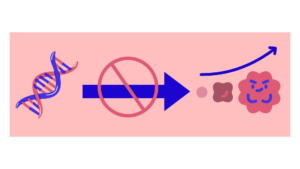Research
Our lab studies how the places we live influence our risk of cancer, specifically prostate cancer. We pursue research in three thematic areas: access to health services, etiologic research, and research on the environment. Each of these topics are described in more detail below.
Health Services

Summary:
Access to health care is a key predictor of favorable prostate cancer outcomes, and unequal access to care contributes to socioeconomic and racial disparities. Black men face twice the mortality rate of prostate cancer compared to to White men. Yet, in settings where Black and White men have equal access to care, racial disparities are sharply attenuated, implying that addressing access barriers at population-level may be one of the surest ways to narrow this gap. Black men are not as likely to receive surgery and radiation for their cancer, and are more likely to receive care in settings with lower resources and availability of trained staff, diagnostics, and treatment availability. Screening for prostate cancer may reduce risk of aggressive disease, but its use is controversial based on conflicting evidence from randomized trials and potential harms of overdiagnosis and side effects of unnecessary treament.
Our lab, in collaboration with faculty across the United States, is working to identify key barriers that, if intervened upon, can reduce inequitable access to care for Black and other men at higher risk of aggressive disease.
Ongoing studies:
- Multilevel Tumor Registry for Oncology (METRO): This multi-state prostate cancer registry cohort of over 1 million participants will serve as a large population-based database to model impacts of targeted strategies to eliminate access barriers based on the sociodemographic and geographic context of the prostate cancer patients in different parts of the United States. We are conducting a series of studies to identify multilevel predictors of prostate cancer-specific mortality to identify places of higher risk, and then will model effects of hypothetical interventions to eliminate barriers to access (insurance, travel burden, availability of urologic oncologists). We are working in collaboration with colleagues at the Dana-Farber Cancer Institute and the Brigham and Women’s Hospital
- SEER Medicare: With collaborators at the Rutgers Center for Pharmacoepidemiology and Treatment Science, we are studying the diffusion of new hormone treatments for prostate cancer across geographic regions and over time to understand access gaps – who is getting treatments first, and who is left out.
- Veteran’s Health Administration: With collaborators at the Greater Los Angeles Veterans Health Administration, we are studying whether the magnitude of disparities among patients living in the same neighborhoods but seeking care in different health systems is different. Differences may imply that scaling up successful policies within the VA to other health care settings may help to narrow disparities. In addition, we are collaborating on studies to understand whether veterans may be exposed to harmful environmental exposures as part of their service which contribute to excess prostate cancer incidence and aggressiveness.
Funding:
Current
- United States Department of Defense Health Disparity Research Award (PI: Trinh)
- American Cancer Society Research Scholar Grant (PI: Qin)
- Veterans Health Administration Precision Oncology (MPI: Garraway, Vassy)
Completed
- Prostate Cancer Research, UK (PI: Iyer, Rebbeck)
- Rutgers Cancer Institute of New Jersey Cancer Prevention and Control Stimulus (PI: Iyer, completed)
- Rutgers Center for Environmental Exposures and Disease, P30 Career Development Award (PI: Iyer, completed)
Etiology
 Summary:
Summary:
Prostate cancer is the most commonly diagnosed non-cutaneous cancer in men, and second leading cause of cancer-related death. Yet, few reliable modifiable risk factors have been identified. Part of the reason for this is that tumor markers for aggressiveness are less specific than for other tumor types, but evidence suggests that more aggressive tumors are associated with modifiable environmental and lifestyle risk factors. Our lab has led several studies to examine whether neighborhood contextual factors, including exposure to leafy green vegetation, may be associated with lower risk of aggressive tumors. We have shown that higher exposure to neighborhood greenness may be associated with lower risk of aggressive prostate cancer, lower mortality among men with prostate cancer, lower systemic inflammation, and lower prevalence of certain cancer-related pathological markers after diagnosis. These studies imply that environmental risk factors predict risk of prostate cancer above and beyond known risk factors (family history, age, screening, obesity). These findings prompted a new study to investigate whether drinking water exposure to per- and polyfluoroalkyl substance (PFAS), a widely used forever chemical, may be associated with poorer prostate cancer outcomes in New Jersey.
In addition to multilevel studies of tumor markers and environmental risk factors, we are leading studies to determine how to incorporate data on genetic ancestry, or similarity, into studies of cancer disparities. While genetic ancestry has been a standard genetic-based measure to examine human variation in relation to disease, our ancestral genetics are influenced by both biology and our environment. Given the strong influence of social policy (forced migration, laws governing inter-racial marriage), great caution is needed when interpreting studies that rely solely on genetic ancestry as a marker of “biological” correlates of race.
Ongoing studies:
- Research on the Epidemiology of Prostate Cancer and Environmental Levels (REPEL): This prospective study will examine outcomes among prostate cancer patients exposed to forever chemicals using blood and tap water measures. Enrollment is open. Please visit our REPEL page to learn more about the study.
- Genetic ancestry and neighborhood context in relation to health disparities: Using data with genetic and geospatial measures, we are designing studies that responsibly investigate multilevel associations between genetic ancestry and neighborhood context with health outcomes. We are offering guidance to researchers aiming to clarify the role of human genetic variation to etiologic studies of cancer disparities.
Funding:
- NIEHS 1K01ES035734 (PI: Iyer)
- Rutgers CEED/NIEHS P30 Center Career Development Award (PI: Iyer, competed)
Environment and extreme weather events

Summary:
Natural disasters related to heat, wildfires, and flooding, have profound implications for societies, health care delivery, and nutrition. Our lab’s work in environmental epidemiology has examined neighborhood contextual factors, including nature contact and green space exposure, with cancer pathways and outcomes. In addition, we support training initiatives to promote use of geospatial databases for environmental epidemiologic studies to better evaluate characteristics of communities that promote resiliency to extreme weather events.
Ongoing funding and past activities:
- Training in Geospatial Data Science for Cancer Prevention: Dr. Iyer leads short courses and an online course delivered through the Harvard Zhu Family Center for Global Cancer Prevention. Most recently, he led a course with colleagues at Rutgers Global Health Institute and Dana-Farber Cancer Institute at the African Organisation for Research and Training in Cancer (AORTIC) 2025 meeting.
- Training in spatial analysis, environmental and chronic disease epidemiology: Seed award from the Rutgers Global Health Institute to implement a hybrid training in geospatial data science for environmental and chronic disease epidemiology with partners at University of Ibadan, Nigeria (completed)
- Environment, Climate and Cancer Early Career Researchers Virtual Meeting: Dr. Iyer led the organizing committee for an early career investigator’s meeting to discuss ongoing studies at the intersection of environmental epidemiology, climate change, and cancer hosted by ISGlobal, the National Cancer Institute, and the International Society for Environmental Epidemiology’s Capacity Building and Education committee. Details about the event are available here.